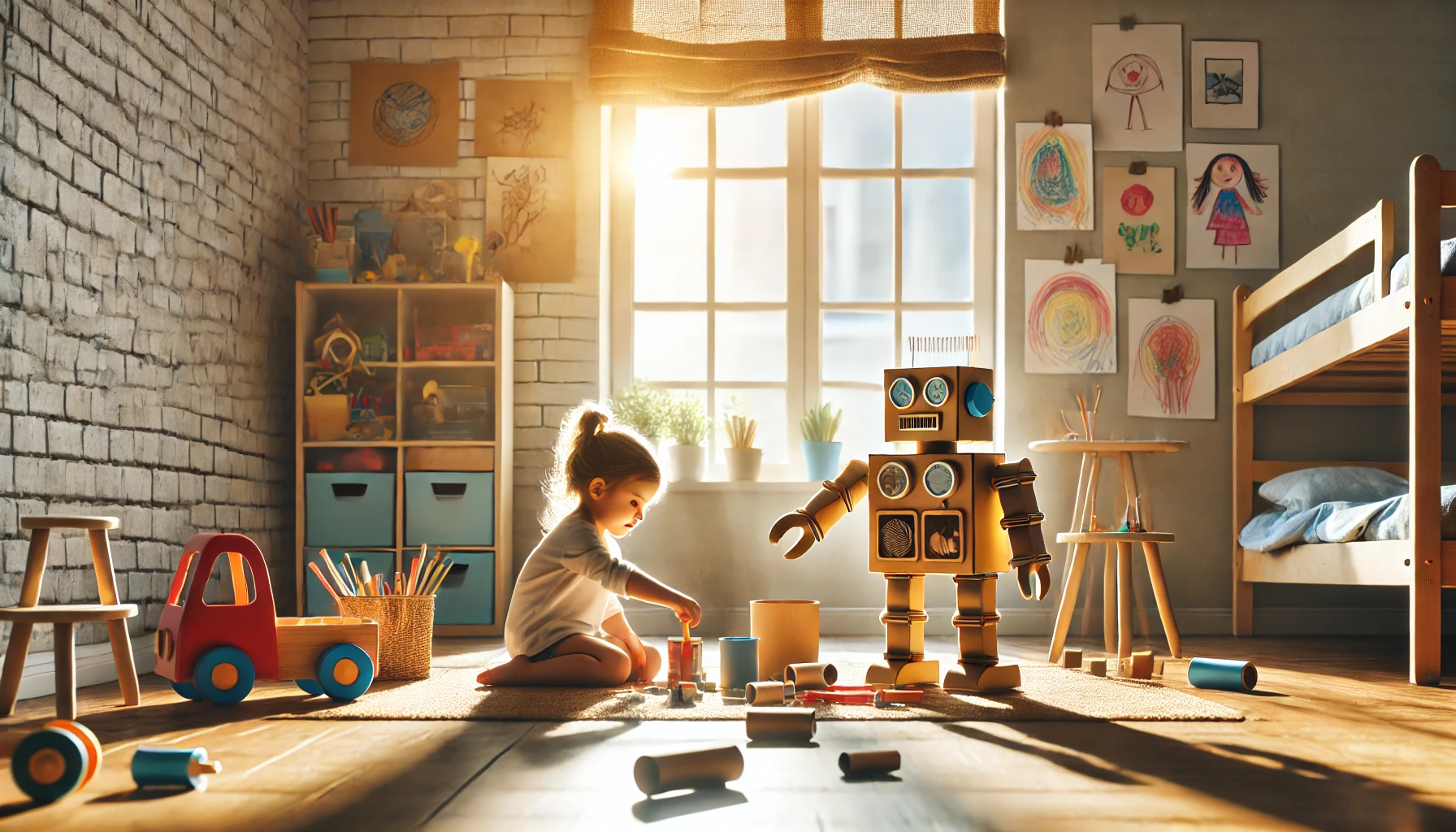Childhood is a magical time, full of discoveries and boundless imagination. One of the most powerful ways to nurture this natural creativity is through play. Especially in early childhood, games and playful activities offer not just entertainment but essential tools for cognitive, emotional, and social development.
Whether you’re a parent, caregiver, or educator, having a set of simple, creative games can be incredibly helpful. In this article, we’ll explore 10 easy and fun activities that stimulate creativity in young children using items you likely already have at home.
1. Story Dice
What you’ll need: Dice and small images or stickers
Write or stick little pictures (like a cat, star, tree, etc.) on the sides of dice. Children roll the dice and then create a story using the elements they rolled. This game stimulates imagination, storytelling, and verbal skills.
You can also draw the images together before starting to make it even more personal and creative.
2. Box World
What you’ll need: Old boxes, markers, scissors, tape
Give your child different-sized boxes and let them build their own miniature world — it could be a city, zoo, rocket ship, or castle. This game invites problem-solving, artistic skills, and free play. Guide them as needed, but let their imagination lead.
3. Mystery Bag
What you’ll need: A cloth bag and random household items
Put several items inside a bag and ask your child to reach in (without looking) and describe or guess what it is using only their hands. Then, have them create a story involving one or more of the items. This stimulates sensory awareness and narrative creativity.
4. Shadow Theatre
What you’ll need: A flashlight and paper cutouts
Create a simple puppet theater using your hands or paper cutouts and a flashlight against the wall. Let your child create their own characters and act out little stories. It’s a wonderful nighttime activity that encourages imagination and expressive skills.
5. Recycled Art
What you’ll need: Paper rolls, cereal boxes, bottle caps, glue, etc.
Set up an “art studio” with recyclable materials. Invite your child to create robots, animals, or abstract sculptures. This teaches sustainability while also nurturing artistic creativity.
Talk to them about their creations and ask open-ended questions like “Tell me about this part!” to encourage more detailed thinking.
6. The “What If” Game
How to play: Ask creative hypothetical questions
“What if we lived on the moon?” or “What if animals could talk?” — this game doesn’t need any materials. It invites children to imagine scenarios and think creatively about the world. You can take turns answering and turn it into a bedtime ritual.
7. Build-a-Song
What you’ll need: Simple musical instruments or household items (spoons, pans, etc.)
Make up a song together using random words or themes (like animals, food, or colors). You can use pots as drums and rice in bottles as maracas. It boosts auditory skills, rhythm, and imaginative language use.
8. Dress-Up Time
What you’ll need: Old clothes, hats, scarves, etc.
Create a costume trunk from unused clothes and let your child play different characters. Encourage them to invent little scenes or stories while dressed as a firefighter, astronaut, or pirate. Roleplay helps children explore emotions and storytelling.
9. Nature Collage
What you’ll need: Leaves, flowers, twigs, glue, paper
Go on a mini nature walk together and collect small items. Then, use them to create a beautiful nature-inspired collage. This connects children to the environment while developing their artistic eye and fine motor skills.
10. Invent a Creature
What you’ll need: Paper, crayons or markers
Ask your child to draw an imaginary creature. Then, together, come up with a name, what it eats, where it lives, and what it does. You can even write a short book about the creature and add more pages each day.
This game combines drawing, creative writing, and storytelling into one magical experience.
Why Creative Play Matters
Creative play is more than just fun — it strengthens important developmental areas:
- Language development: through storytelling and roleplay
- Problem-solving: when building, inventing, or imagining solutions
- Social-emotional growth: by expressing feelings through pretend play
- Motor skills: especially in hands-on activities like collaging or sculpting
- Confidence: as they see their ideas come to life
When children are given the freedom to explore their ideas in a supportive environment, their self-esteem, independence, and curiosity grow.
Final Thoughts: Let the Imagination Lead
The best part about these games is that they don’t require expensive toys or complicated setups. With just a few everyday items and a lot of love and encouragement, you can turn your home into a creative wonderland.
Let your child take the lead. Sit beside them, listen actively, and celebrate their ideas — even the wild and silly ones. After all, some of the greatest inventions in the world started with a simple, playful thought.
